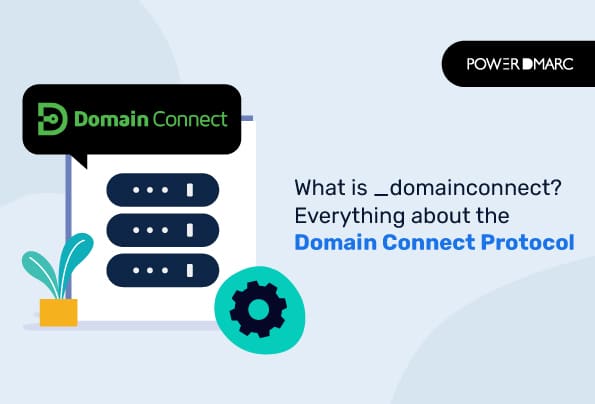What is the Domain Connect Protocol?
Domain Connect is an amazing open-source standard that helps you manage your DNS settings and prevents you from having to manually update them. It also has other features like email notifications and custom domains. Domain Connect can simplify your DNS configurations drastically and is best suited for non-technical individuals who want to configure email authentication protocols like DMARC, SPF, and DKIM.
Key Takeaways
- Domain Connect simplifies DNS management by automating updates and configurations for users.
- This protocol bridges communication between domain owners and third-party service providers, reducing complexity.
- Domain Connect allows for seamless integration of email authentication protocols without technical expertise.
- Supported service providers automate the setup process, significantly decreasing the time required for DNS configurations.
- The protocol enhances transparency and efficiency by enabling direct communication between the domain registrar and DNS provider.
How does Domain Connect work?
If you have a newly registered domain name, no matter from high traffic domain & hosting providers or not, to use your domain for various commercial and business purposes actively you might want to get help from third-party service providers like ESPs, web hosting providers, etc. This requires complicated DNS configurations that you may not be adept at implementing or managing.
Domain Connect helps authorize your DNS provider to share your DNS settings with your desired third parties, safely and without hassle. This forms a direct link between your domain registrar and the service you would be using, bridging the communication gap and increasing transparency. Thereafter, all DNS changes, updates, and configurations are handled seamlessly in the background between the two communicating parties while taking the load off your shoulders.
We will not be diving into the technical details of the standard in this document. You can view the latest version of the protocol here.
What is the need for the Domain Connect Protocol?
Domain owners often pull back in terms of making the most out of their acquired domain name because of complicated DNS implementations. Especially in situations where they invest in third-party domain hosting or email services, it gets all the more difficult to set up the correct DNS settings and monitor updates manually.
This is where the Domain Connect protocol swoops in to save the day. Built for domains hosted at a DNS provider, the standard makes it easier for domain owners to make DNS configurations with little to no expertise on the matter.
Simplify DMARC with PowerDMARC!
Establishing the importance of _domainconnect through Use Cases
Without Domain Connect
Without Domain Connect, under usual circumstances, your service provider will reach out to you with complicated instructions on the required DNS settings demanding manual implementations on your part. These instructions will depend on the DNS provider you use which they can easily find out by querying your top-level domain. This is not ideal and often confusing.
With Domain Connect
With the Domain Connect protocol in place, the service provider no longer needs to query the TLD to discover the DNS provider, instead, it can acquire a full list of nameservers by querying the _domainconnect record published on the user’s DNS. Moreover, it can directly communicate with the DNS provider with the required DNS configurations in the form of a service template.
Thereafter, all the DNS provider needs to do is verify your authority over the domain name and then successfully implement the DNS changes mentioned on the template.
Service Providers supporting the Domain Connect Initiative
- 1&1 IONOS
- GoDaddy
- WordPress
- Squarespace
If you use any of the above-mentioned domain registrars for hosting your web domain, we have good news for you! These registrars have adopted an automated approach to the Domain Connect protocol, meaning if you register your domains using any one of them you will be requested to publish a _domainconnect CNAME, TXT, or NS record to configure the protocol. The whole process takes only a few hours!
How to set up the Domain Connect Protocol?
Note: The process for setting up the protocol is handled by your service provider and not you.
To set up the protocol your service provider:
- Creates service template(s) with a list of instructions depicting certain actions to be performed in your DNS.
- Generates a merge request that helps your service provider connect to the Domain Connect Repository
- Communicates with your DNS provider to implement the protocol
And you’re done! Your DNS provider might implement the changes themself. In other cases, they may provide you access to the DNS management console and walk you through the domain name verification and protocol set up which takes only a few minutes. After saving changes to your DNS settings, it can take 24-72 hours for your DNS to process the changes.
- Microsoft Sender Requirements Enforced— How to Avoid 550 5.7.15 Rejections - April 30, 2025
- How to Prevent Spyware? - April 25, 2025
- How to Set Up SPF, DKIM, and DMARC for Customer.io - April 22, 2025
